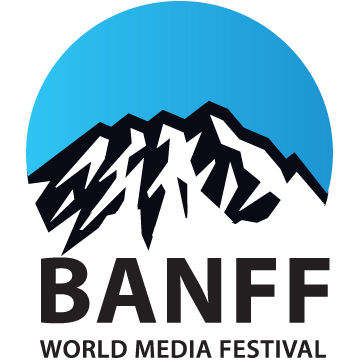
BANFF – Identity figured prominently as Monday took shape at the 2015 Banff World Media Festival.
Jill Soloway, creator of Transparent, provided her own version of the paradox of plenty in the digital age. Apparently, trans exclusionary radical feminists, TERFs for short, are taking considerable exception to transgender glamorizations such as those on her show, she said.
Even The New York Times has engaged this latest bits and bytes controversy, with articles claiming that trans-gendered men who become women have never experienced the anxieties and oppression of menstrual periods, unwanted pregnancies or the other challenges of growing up as a girl.
But what really seems to knot the knickers of chattering feminists is that Caitlin Jenner can't wait to have sleep overs, girl's nights out, and mani-pedi parties. For the adamant TERFs, this is identity all balled up!
In my view, what I have seen of Transparent, an Amazon Studios creation with Sony Pictures, it is a tough, touching and thoroughly modern show. I especially respect Ms. Soloway's informed suggestion that it's even funnier if you watch it after a few joints…
Even this year's Banff has a wee identity problem.
Last year, 2014, the sky was falling on protections for Canadian television, everything regulatory had been thrown in the air, coarse consumers were going to get a say, high anxiety prevailed.
This year, 2015, is the transition year. Filled with the bubbling brew of wait-and-see, TV's paradox of plenty in the digital era is now sorting itself out. Next year, the Oracle of Ottawa will no doubt tell us what we need to know about what actually happened in TV Land.
But will he reprise with his Back To The Future skateboard?
Yes – identity.
Rebecca Howard, General Manager of NYTimes Video, for the aforementioned Gray Lady, is not in the newspaper business. The newspaper part of the enterprise is simply there for good story ideas to pitch to producers or license to show-runners. The New York Times runs 300 articles a day and gets two or three versioned into video, often through her 50+ person production crew.
For example, the hit series Varnished, about New York State nail salons, began life as a newspaper exposé, but ended as legislation brought into being by Governor Andrew Cuomo to combat the exploitation of these Vietnamese immigrants.
Howard is also partnering with Facebook on "Harry Potter-inspired" auto-playing video that appears as you read news text, and she's doing the same with the Travel Channel on an upcoming six-part video series.
Moreover, she is transfixed by digital dollars surpassing conventional TV dollars next year in the U.S. market. Could online NYTimes Video save her newspaper?
ToT still top of mind
Canada's Terms of Trade identity crisis re-appeared as well, at least if we are to have successful independent producers at the international level.
Domestic producers argued if the CRTC is correct and conventional/traditional broadcasters are in trouble, then Canadian indie producers can't be quashed. There are four million Canadian subscribers to Netflix and, in a digital era, only independent producers can assure the global success of our native product.
BDU-owned broadcasters are not only getting poorer, they're structurally conflicted in taking on OTT and SVOD foreigners, said delegates and session leaders. That said, the Canadian Media Production Association still hopes to get Terms of Trade re-negotiated (without CRTC support as ToT was removed as a condition of license for broadcasters under the new TV Policy) over the next 18 months and before the major television renewals begin.
Interestingly, U.K. attendees pointed out that, with OFCOM support, their Terms of Trade had been happily complicit in seeing the British indie production sector value increase by roughly 350% between 1998 and 2014!
“The digital era means being an indie can no longer be a lifestyle decision: One where small indie shops anywhere in our country feel entitled to public sustenance and to third parties levelling the field.”
Instead, Canadian independent producers argue that broadcasters are "sucking up all the rights and becoming mini-studios.” And if the CRTC can't see that, then at least deep-six the requirement that a Canadian broadcaster has to be in the picture to access tax credits, fund monies, and other supports; let our indies cut out the broadcasters as trigger-middle-men and deal directly with consumers or online partners.
There's some good sense to this.
But Canadian producers also need to acknowledge that the digital era means being an indie can no longer be a lifestyle decision: One where small indie shops anywhere in our country feel entitled to public sustenance and to third parties levelling the field.
What also happened in The Golden Age of TV in the U.K., was the disappearance of marginal and unsustainable players.
Also interestingly Netflix and Amazon have tweaked their identities by behaving more like traditional media in the last four months. OTT operators have, indeed, been buying directly from producers and as far as OTT hot tips go, yes they are buying more from independents. However, the new hot markets for Canadians should be South Africa, Spain, Italy and Portugal who are now themselves fresh, emerging digital markets.
What also happened in the U.K., was that smaller indie producers banded together for their common good. So why can't Canadians create an even better Rightster to harness the potential of domestic video for global audiences?
Don't we know our own owners, publishers, brands and creators better than others?
Canada led the way in children's and youth programming, so do we really need to rely on Fullscreen to be our global youth company developing online creators and producing multi-platform entertainment experiences? Is there something about the Canadian identity that prevents us from "big and bigger" thinking?
The folks from Mountainview, California, certainly don't suffer from that fault.
Yahoo, Google, Apple, Twitter are buying out Hollywood.
Beware, Hollywood North!



